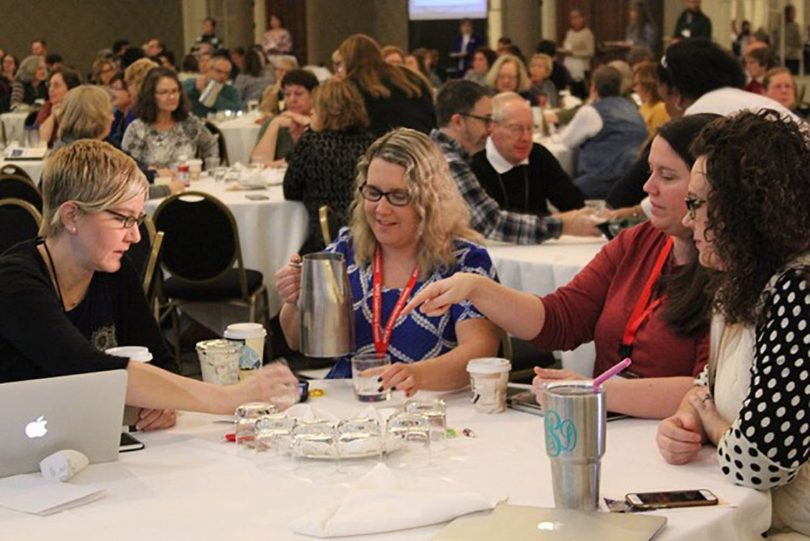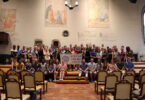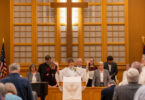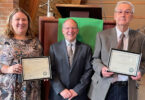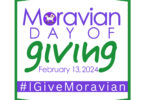Every winter, several Moravian pastors and church educators gather with hundreds of other pastors, educators and lay volunteers from around the country who are passionate about Christian education at the Association of Presbyterian Church Educators (APCE) Annual Event.
The 2018 event featured the theme “Deep and Wide: Boundless Hospitality,” depicted by open doors. While Presbyterian is in the title of this organization, it is an intentionally ecumenical body with five partner denominations now working together and more groups being added. When we gather, each partner denomination has opportunities to be featured in some way in the worship portions of the plenary sessions. With this year’s theme of Hospitality, the Moravians were invited to share our lovefeast tradition with everyone.
The logistics we needed to figure out included: how do you take a Lovefeast into a conference center ballroom? What do you serve and how do you serve it? How do you convey all the different ways that we celebrate lovefeast to folks who’ve either never experienced this tradition or only been to a Christmas Eve service?
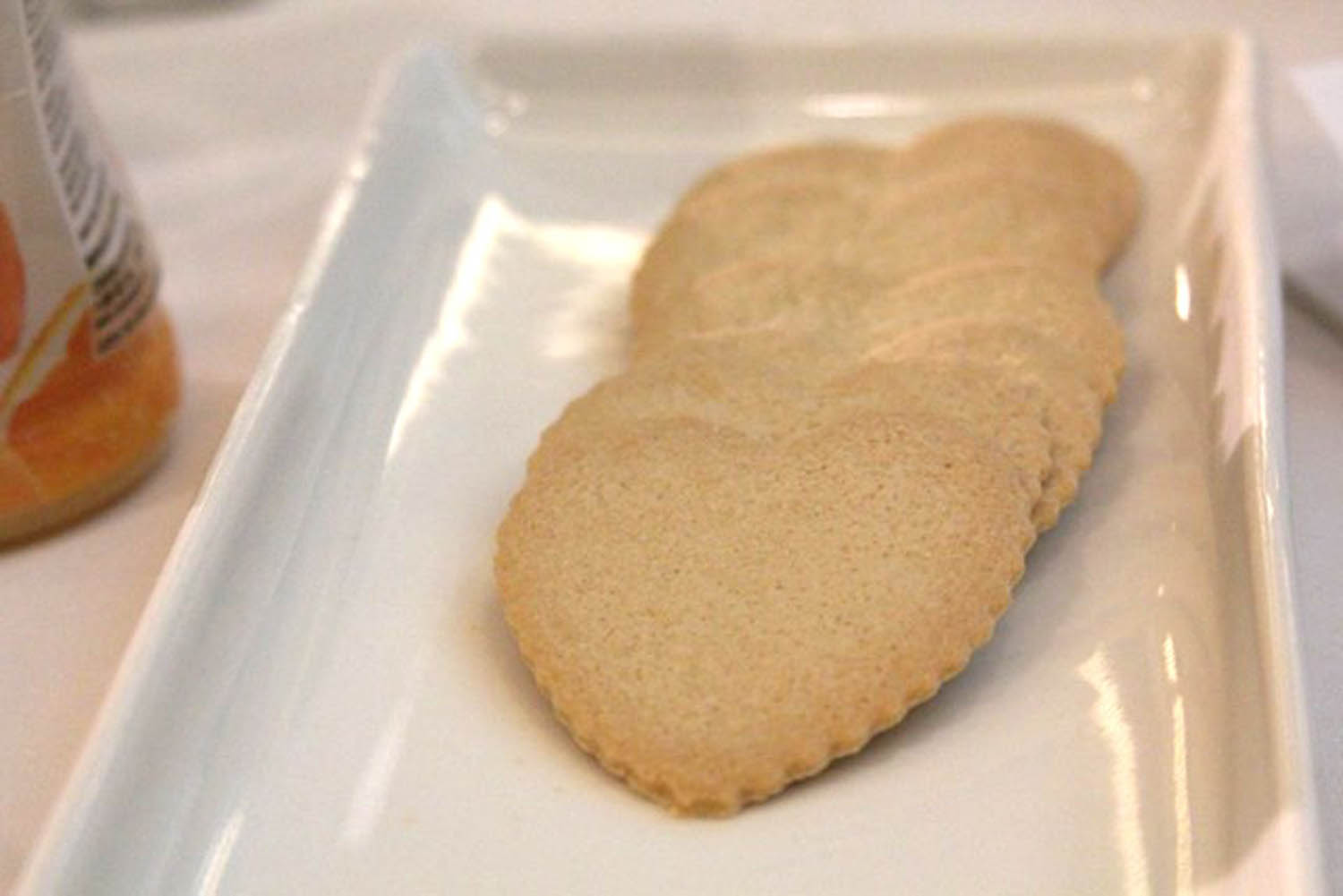
Jami Vandock, the educator at Raleigh Moravian Church and a lifelong Moravian, summed it up well. In her words, “Adapting to the environment seemed to really strip Lovefeast down to its essentials. It wasn’t about the buns or the coffee, but rather about the roots of where it all began. For those of us who become really entrenched in those ‘sacred cows’ of tradition, it is nice to remember that those elements aren’t what make Lovefeast worth repeating. It also struck me that the APCE theme of ‘Open Doors’ really hammered home this idea of how bringing the new into the fold might change the way our church traditions look.”
Jami’s right; we had to strip the tradition down to its essential elements because we couldn’t assume anything about what those worshipping with us knew or understood about lovefeast. We knew we had to find a way to tell the story of the origins of lovefeast—tell it in a way both quickly and powerfully—and we needed to tell such a story to a room full of educators!
To tell the story of August 13th, we decided to use the Godly Play method with a script that Gil Frank created for congregations. Godly Play uses scripts based on scripture and employs wooden figures, backdrops and fabrics to invite children to engage with the story through imaginative play. Gil had developed a script and a set of these figures and backdrops to tell about how the different people with different backgrounds and perspectives who had sought out refuge in Herrnhut, came together through prayer and conversation. The story concludes with the Communion service on August 13, 1727, at the Berthelsdorf church, and the shared meals that followed—the first lovefeast.
Now, a Godly Play circle of children can get a little crowded at about 20 kids. For a worshipping congregation gathered in pews facing a communion table, maybe 200-300 can have a good view. We had a few more hundred than that…so stop-motion animation seemed a good choice as it could be projected to the large screens around the ballroom.
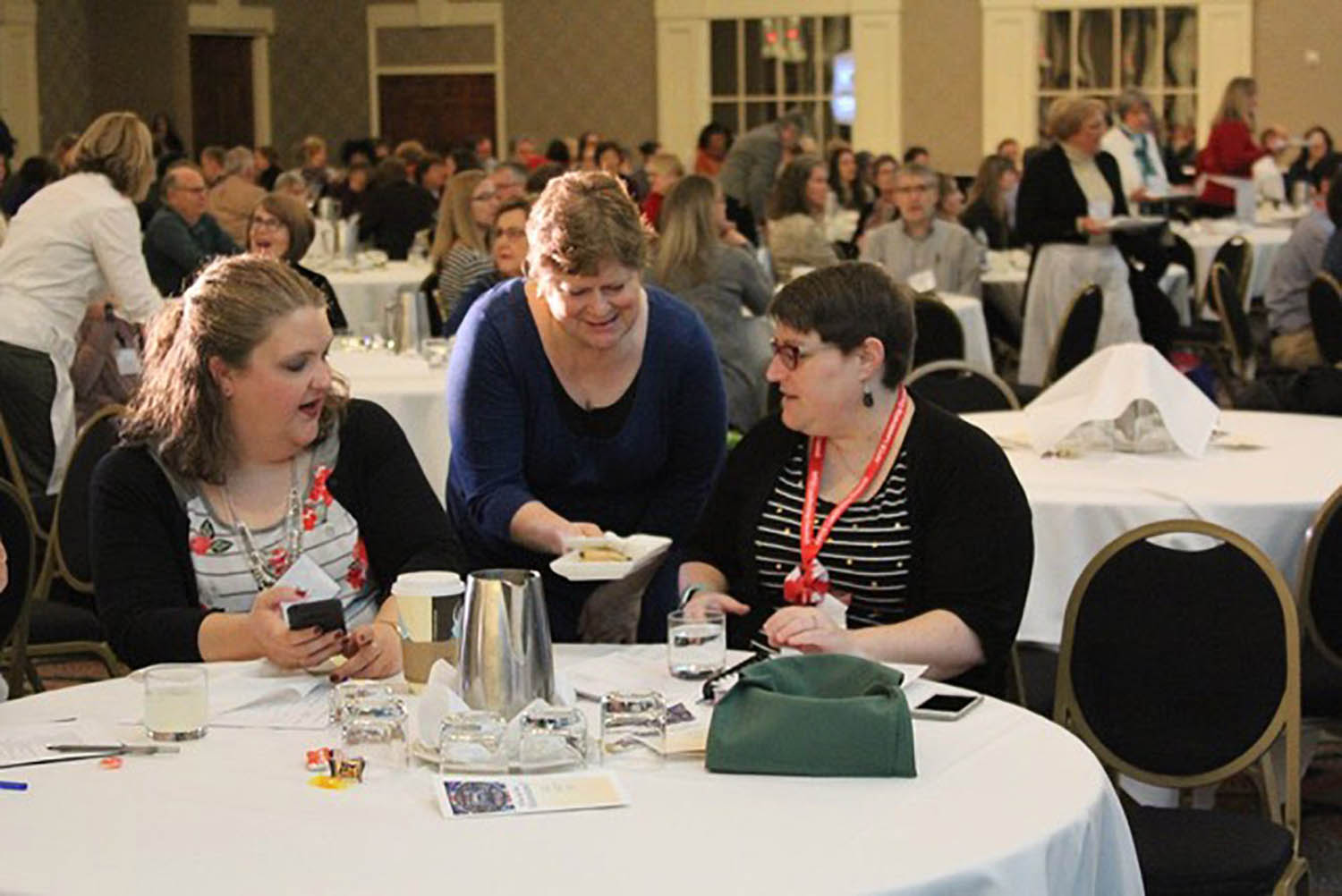
For the lovefeast, we chose hymns that exemplified themes of hospitality and reconciliation to be sung. During the service, we highlighted that lovefeasts rely on proclamation through congregational song. Dieners were drawn from Moravians, Lutherans, and Presbyterians attending the event. As everyone shared in the lovefeast of cookies and lemonade, we asked them to discuss the reflection questions from the Godly Play script:
- How might it feel to be harmed for your religious beliefs?
- How might it feel to meet new people who have different opinions from you?
- Have you ever had disagreements and arguments over things you think or believe?
- Can you remember a special time in your life in which peace, love and joy were especially present?
Now you might ask, why is it so important that a small delegation of Moravians attends this large gathering of ecumenical pastors and educators? Beth Hayes, Director of Congregational Resources & Ministries at the Board of Cooperative Ministries, shares the following. “I have had many APCE colleagues who, knowing my association with the organization and being Moravian, have commented on how it enlightened them to our denomination in a truly unique way. So many think of the lovefeast as a great idea especially around the Christmas season and have asked for odes and orders of worship. This made them realize that lovefeast is much more and has deep meaning to the roots of our denomination. I hope to see these ecumenical ventures go even further in the coming years as it enriches not only Moravians but other denominations also.”
You can view the worship service and the other plenaries and worship services of 2018 APCE at http://www.apcenet.org/2018-videos-page.
The Moravian stories collection of Godly Play scripts and patterns are available through the Board of Cooperative Ministries. We are working to make the stop-motion video I created of the August 13th script available upon request.
The Rev. Christy Clore, a Moravian pastor certified in Transitional Ministry and Christian Education, serves on loan in the PC(USA) at First Presbyterian Church of Reidsville, N.C.

